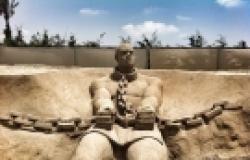'Modern Slavery': a response to Rahila Gupta

Policymakers and modern-day abolitionists have co-opted trafficking and slavery discourse for illiberal ends. To say so is not the same as denying the appalling realities of the modern world. Quite the opposite.
Virtually everyone seems to agree that combatting modern slavery should be a top political priority around the globe. But, in a post-abolition world where nobody is legally ascribed the status ‘slave’, and yet where exploitation, oppression, and violence are all around us, what exactly is everybody agreeing to combat? This question provides the jumping off point for my recent book, Modern Slavery: the Margins of Freedom. Drawing on debates amongst historians, philosophers, classicists, anthropologists, and sociologists about chattel slavery’s defining features, the book critically interrogates the definition of slavery used by NGOs like Free the Slaves, Walk Free, Not For Sale, and CNN Freedom Project, which together comprise what I call the ‘new abolitionist’ movement.
The book is hardly flattering about the leading lights of the new abolitionist movement, and I would not expect them to be sympathetic readers. However, I was surprised by Rahila Gupta’s reaction to it. Gupta is not – to my knowledge – affiliated with any new abolitionist NGO, and does not figure among the anti-slavery activists I criticise. She is instead associated with Southall Black Sisters, a grass roots NGO that emerged out of anti-racist struggle. The Southall Black Sisters works to challenge gender-related violence and to ensure that women are able to access rights to justice, equality, and freedom. It has also spearheaded campaigns against restrictive and discriminatory immigration rules. I would say there are many elements of my book that speak closely to all of these concerns.
Common ground
First, the book stresses that transatlantic slavery was modern slavery. It is the form of slavery that emerged and flourished alongside the development of modern, liberal societies. This simple fact opens up important questions about when and why profoundly illiberal practices and relations can be tolerated in modern liberal societies, questions that are of enduring relevance. In the US, for example, the enslaved could be excluded from the liberal liberties that every person was to enjoy because they were not constructed as rights-bearing, independent, persons, but as sub-persons. That exclusion was racialised, and transatlantic slavery brought into existence a system of racial domination that remains very much alive today, and against which activist organisations like Southall Black Sisters continue to struggle.
Further common ground can be found in the chapter on wives and slaves. Here I argue that without access to divorce, contraception, abortion, and legal protection from marital rape and domestic violence, initially consensual marriages can become prisons just as much as marriages entered into through sale or coercion. And there is also extensive common ground to be found in my discussion of immigration controls and immigration detention, for the book is very much concerned with relationship between slavery and the law, state, and political community.
In the transatlantic context, the private ownership and exploitation of slaves was underwritten by a wider legal and social machinery that controlled and restricted the enslaved as sub-persons. Controls over slave mobility vividly illustrate this, for without a state to ensure that slaves had nowhere to run and nowhere to hide, what was to prevent slave property from taking flight? The new abolitionists focus on the wickedness of individuals who today coerce, confine, and exploit individual migrants, labourers, prostitutes, wives, and children. But the history of transatlantic slavery suggests that to understand when and why whole groups of individuals become vulnerable to heavily coercive and exploitative relations, we need to focus on the state.
I therefore devote two full chapters of my book to exploring how contemporary states use their immigration regimes and border controls to deploy techniques pioneered by slave states to constrict slave mobility. These mechanisms are now employed to keep unwanted migrants ‘out’ rather than slaves ‘in’, and to enforce temporary migrant workers’ dependence on sponsors, rather than slaves’ dependence on slaveholders. But the end result is conceptually similar. Contemporary states actively make certain groups of individuals vulnerable to abuse and exploitation through law, just as slave states built legal frameworks to maintain the power of slave-owners over slaves. Again, the book’s emphasis on freedom of mobility as core to human freedom is, I think, broadly in line with the politics articulated by Southall Black Sisters.
The difference between choice and freedom
What did Gupta find so provoking about the book that all this common ground was worth naught to her? One answer seems to be that she did not recognise the two chapters described above as making an argument in support of open borders. This suggests I should have included an explicit statement to that effect somewhere, perhaps along with one spelling out my opposition to chattel slavery, in case that also eluded any reader. Gupta also found my discussion of human agency objectionable, though she largely seems to object to a point I did not make. The thrust of the book’s argument on agency is that unless human beings are physically held in chains or straightjackets, they have agency in the sense of having to choose, moment by moment, a course of action. But, and this is the crucial caveat, having agency and choice is not the same as having freedom or autonomy. The tragedy of Margaret Garner, an enslaved woman who killed her beloved 3-year-old child rather than allow her to be returned to slavery in 1856, attests to this stark difference.
The idea that choice and contractual consent do not amount to freedom is another of the book’s core themes. Global free market capitalism sets people free to choose between options that are not of their choosing. The teenage workers I discuss in the book, for example, face an unhappy choice. They may either undertake harsh labour in hazardous conditions for no pay at home – and thus not be able to fund their schooling – or move outside the home to undertake harsh labour in hazardous conditions for pay, which will fund schooling. Acknowledging that this is the actual choice many children in the developing world face does not “let the system off the hook”, as Gupta puts it, for it is precisely “the system” that has made these the only two options available for the poor and propertyless. The leaders of the corporate world who support and help to bankroll the new abolitionist movement are heavily invested in maintaining that self-same system.
I choose to emphasise agency and choice in contemporary contexts often discussed as ‘modern slavery’ because, though it is not the same as autonomy or freedom, this kind of agency is powerfully connected to people’s sense of dignity and honour. When we are forcibly prevented from making choices, even between unenviable options, most of us experience it as dishonouring and infantilising. One very real problem with the ‘modern slavery’ discourse promulgated by the new abolitionist movement is that it licenses interventions that do exactly this. Another is that it encourages policies that further restrict the choices open to economically and/or politically marginalised groups. Around the world, legal restrictions have been placed on women and children’s freedom of mobility; sex workers have been indiscriminately rounded up and forced into ‘rehabilitation’; border controls that have already led to massive loss of life have been strengthened; and non-state sanctioned mobility has been further criminalised, all in the name of combatting ‘modern slavery’. In many places, the harsh punishments introduced for ‘modern slavers’ are actually meted out most often to women, often poor mothers and/or sex workers.
In short, new abolitionist talk has been widely and readily co-opted to serve political agendas that are morally conservative, neoliberal, and/or anti-immigration. It has also been widely and readily slotted into a celebratory narrative about liberal societies, one that glosses over their foundations in racial slavery and the race politics of leading white abolitionists, and that disregards the continuing afterlife of racial slavery. If the leaders of the new abolitionist movement did not intend for their message to be interpreted in this way, they have had plenty of time and occasion to say so. In fact, if figures like Andrew Forrest or Kevin Bales were to loudly decry the Australian government’s detention of asylum seekers on Manus Island as a form of modern slavery, for instance, or speak out against the growing use of ‘shelter detention’ for sex workers, it might actually have some political impact. But they don’t. So, if the tone of the book is “sneering and dismissive” in relation to this kind of anti-slavery activism, I find it hard to be apologetic about it. I am also puzzled as to why Gupta would be offended by it. Unless she simply didn’t ‘get it’.
And with that in mind, I will plead guilty to the charge of having taken an academic interest in the definitional problems associated with slavery. I am an academic and the book was written first and foremost for an academic audience. But my interest in these definitional problems is not purely academic. How social phenomena and human experience are defined and classified, and what gets grouped together and placed under what particular headings, matters as much in the real world as it matters in the ivory tower, if not more so. It matters when politicians conflate the term ‘smuggling’ with ‘trafficking’ and bring both under the heading ‘modern-day slave trade’. It matters politically whether we talk about ‘migrant workers’ subject to wage theft, confinement, passport retention, etc. or about ‘modern slaves’. It matters politically that the concept ‘modern slavery’ is so poorly defined and elastic that it can be presented as a huge problem when immigration or decriminalisation of sex work are being discussed, but flexed in quite the reverse direction when it comes to affording exploited migrants rights and protections as ‘victims of trafficking’. This flexibility is what allows sex workers, for example, to be framed as abused ‘sex slaves’ in political rhetoric, yet instantly transmogrify into ‘illegal immigrants’ in need of deportation as soon as they come into direct contact with the immigration authorities.
My book does not deny “the appalling reality” of violence, exploitation, and abuse in the contemporary world (if anything, it catalogues it). What it questions is the politics of naming some aspects of that appalling reality ‘modern slavery’ and others not. It also questions the suggestion that any aspect can be addressed in isolation from the political and economic structures and inequalities in which they are embedded. The book therefore concludes by calling on academics and activists to better connect the truly terrible realities discussed under the banner of ‘modern slavery’ to political debates on open borders, prison abolitionism, the continuing life of race and caste as systems of domination, capitalism’s continuing drive to enclose more and more of the common wealth through the commodification of water, health care, knowledge, and education. And more. None of this strikes me as indicative of a vast and unbridgeable gulf between me and Rahila Gupta, or indeed any activist who wants to see equal enjoyment of the kind of freedom that can only really be built in a borderless world, a world without white privilege, gender hierarchy or heteronormativity, and a world with a truly human and sustainable global economy.
This piece has been written in response to Rahila Gupta’s piece ‘Defining modern slavery out of existence: who benefits?’, published on openDemocracy 50.50 on 3 February 2016.
Photo credit: cliffjamester via Foter.com / CC BY-SA


